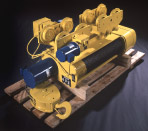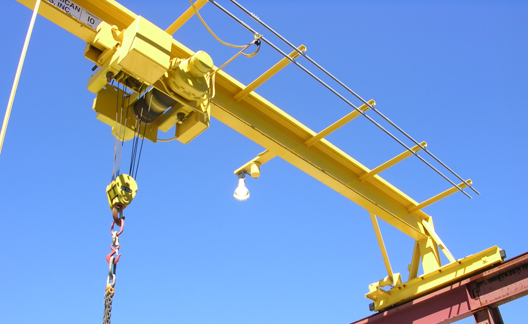There are two
main types of electric hoists:
Chain hoists...
- lift by pulling the chain through sprockets and depositing the chain into a chain container
- are more common for applications below 7.5 tons
- require less maintenance
- are less expensive
- provide true vertical lift at no extra cost

Wire rope hoists...
- lift by wrapping cable around a grooved drum
- dominate the market at 10 tons and above
- offer very fast lifting speeds
- offer a wide array of options
- can be rated H-5 (severe duty)
Both chain and
wire rope hoists are rated H-4 (heavy
duty) or H-3 (moderate duty). Duty
ratings are a better indicator of
hoist durability than hoist type
(chain or wire rope). Both types use similar motors, brakes
and controls. The main difference
between electric chain hoists and
wire rope hoists is in the design
of the lifting mechanism.
Be sure to request an H-4 rating on either your chain or wire rope hoist to ensure long life and low maintenance.

True vertical lift is achieved by chain hoists that rise straight up. Wire rope hoists move the load very slightly laterally while lifting because the wire rope is wrapped around a grooved drum. This doesn’t mean that a wire rope hoist is inferior - in most applications, the lateral motion is negligible. True vertical lift is only necessary in applications that require extremely precise vertical placement such as stripping molds.
|







